Gardening Australia episode 35 2020: Tino Carnevale visits a colourful iris garden, Jane Edmanson profiles attractive edibles, Costa Georgiadis visits a revamped native swamp, Millie Ross meets inspiring women connecting community by growing native foods.
Gardening Australia has always provided practical, trustworthy and credible gardening advice to inspire and entertain. Inspiring, entertaining and full of practical advice, join Costa Georgiadis and the team as they unearth gardening ideas, meet avid gardeners and look at some of the most inspiring gardens from across the country.
Gardening Australia episode 35 2020
Thrills for Frills
Tino visits an iris grower with a colourful backyard and learns propagation tips to keep the obsession growing. Chris has over 300 varieties of iris growing in his backyard and says he’s got the “iris virus”! Chris started growing irises in Canberra in the 1980s before establishing an iris nursery with over 900 varieties, and the obsession has kept growing!
Some of Chris’ favourites include ‘Violet Dark Falls’, ‘Songsmith’ and the Australian-bred ‘Dinner Talk’ and ‘Louisa’s Song’ – a multi-budded, long flowering, purple show-stopper.
Chris experiments with hybridisation by hand pollinating different varieties. He uses tweezers to pluck a dry anther loaded with pollen out of one plant (the father) and dabs the pollen onto the stigma of another plant (the mother). He’ll check for a swelling at the base of the mother plant in a week’s time, which means the pollination has worked. He then uses a stocking to protect the flower and catch any seeds. The seeds are planted in May after the heat of summer has passed.
Most of the irises in this garden are of the bearded variety – characterised by growing from a rhizome and each flower has a fluffy patch, or ‘beard’, on the lower petals.
FAQs – No fruit on citrus | Roses for subtropics | Parsnip problem
Jane explains why citrus are flowering but not fruiting, Jerry highlights the best roses for the tropics, and Millie reveals why your parsnips haven’t come up.
Restoring Gundungurra – Gardening Australia episode 35 2020
Costa meets a man who rallied the community to a restore a culturally important and endangered swamp in the Blue Mountains. At the headwaters of the Katoomba Falls Creek is a 30-hectare bushland reserve on the traditional lands of the Gundungurra and Dharug peoples.
Senior Gundungurra elder Aunty Sharyn Halls has a strong connection to this gully. In 1891 “this is where we actually settled, and it became an Aboriginal mission.” In the beginning there were 8 Aboriginal families and the community continued to grow – until the land was destroyed for development of a racetrack.
Gundungurra elder David King says although there was a community living here, “in some people’s eyes they didn’t exist, so they just came in and flattened the whole place”, demolishing the delicate environment. In 2002 the land was handed back to the community and with the support of local Aboriginal people like Aunty Sharyn, David worked with Garguree Swampcare to restore the land back to its original state.
Irrigation Maintenance and Repairs
Josh shares a tip for irrigation maintenance and repairs that’s as easy as boiling the kettle! Polypipe is commonly used to deliver water from its source to the garden bed and comes in various sizes. When polypipe is cold, it can be tricky to insert fittings and can strain your hands.
All you need to do is boil the kettle and fill up a mug with the hot water. Then place the end of the polypipe into the mug and hold there for 5-10 seconds. The heat will soften up the pipe and the fittings should slide in with little effort. As the pipe cools, it will constrict and tighten up the connection.
To prevent it from popping off under pressure when water is running through it, you still must always attach a clamp and use a pair of grips to ensure it’s extra tight.
Good Golly Miss Poly – Gardening Australia episode 35 2020
Sophie takes us on a tour of her new polyhouse that has changed the game when it comes to growing tomatoes and tropicals. Sophie’s enclosed dream garden is 10m x 5m and covered in transparent plastic that lets plenty of sunlight in whilst allowing her to control the climate. One of the biggest appeals of the polyhouse is being able to grow summer produce like eggplants, basil, capsicum, and tomatoes all through the year, no matter the frost outside.
In summer it can get very hot inside though, and pests like whitefly and mealybug can build up in the warm conditions. Sophie is introducing beneficial bugs to prevent infestations. The sliding doors also makes it easy to let fresh, cooler air in when needed.
The next steps include growing plants on trellises along the walls to help with natural air conditioning and using thermal fabric as a blind on the roof to keep the temperature more consistent on extreme weather days.
Building on Bushfoods
Millie meets an inspiring Dja Dja Wurrung elder and the Murnong Mammas team, whose love of growing native food plants has connected an entire community.
Eat Your Borders – Gardening Australia episode 35 2020
Jane suggests some plants that are both deliciously edible and fabulously ornamental.
Containing Grasses
Clarence shows us how to grow a thriving native grassland in a pot.
Plant Hunting – Gardening Australia episode 35 2020
Jerry hunts for plant identification answers with the experts at the Queensland Herbarium.
My Garden Path – Dr Luis Mata
For Australian Pollinator Week, we meet photographer and ecologist Dr Luis Mata whose keen eye for insects puts them in a whole new light.
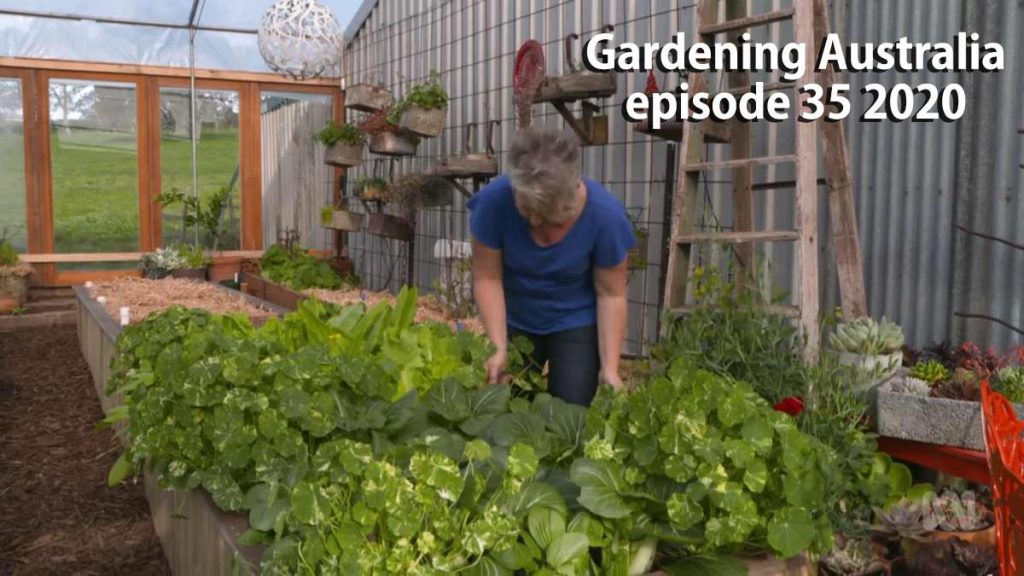
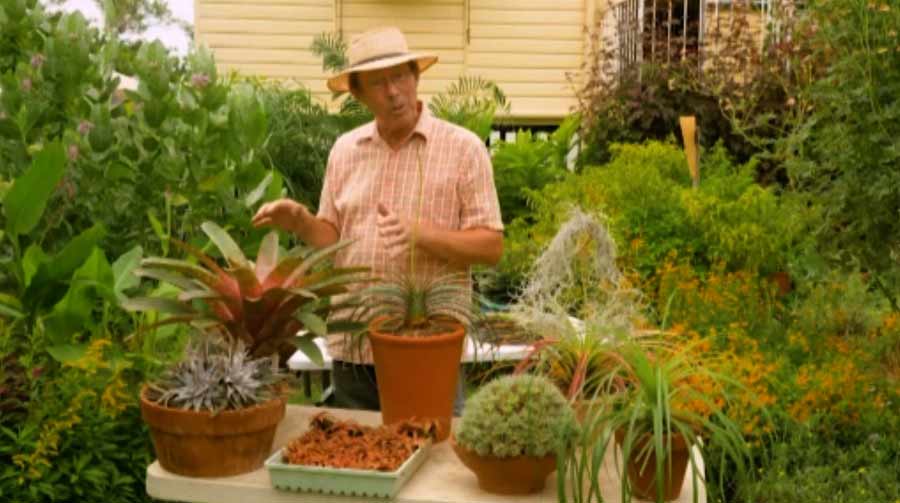
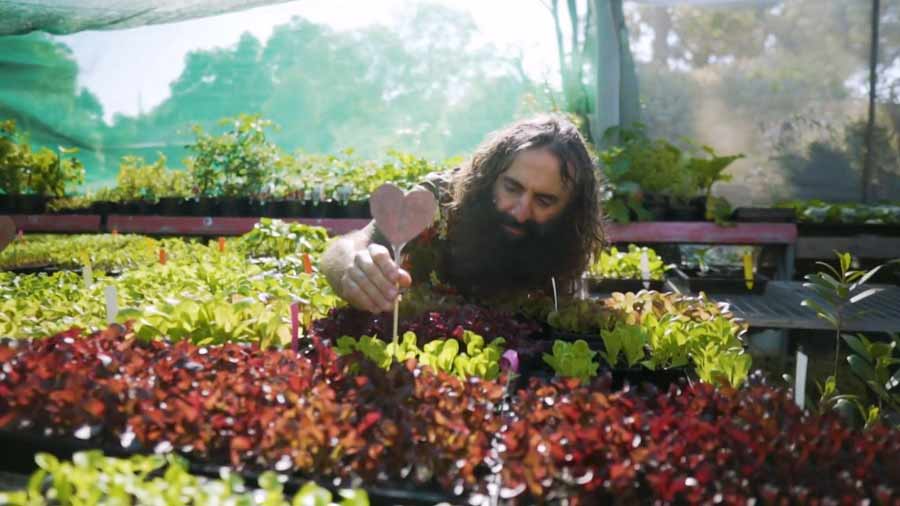
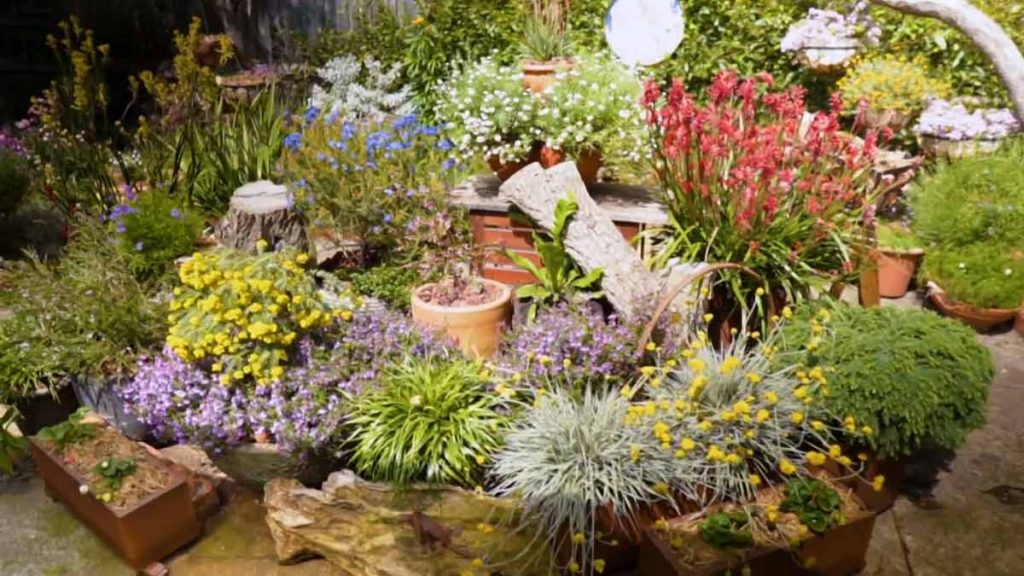
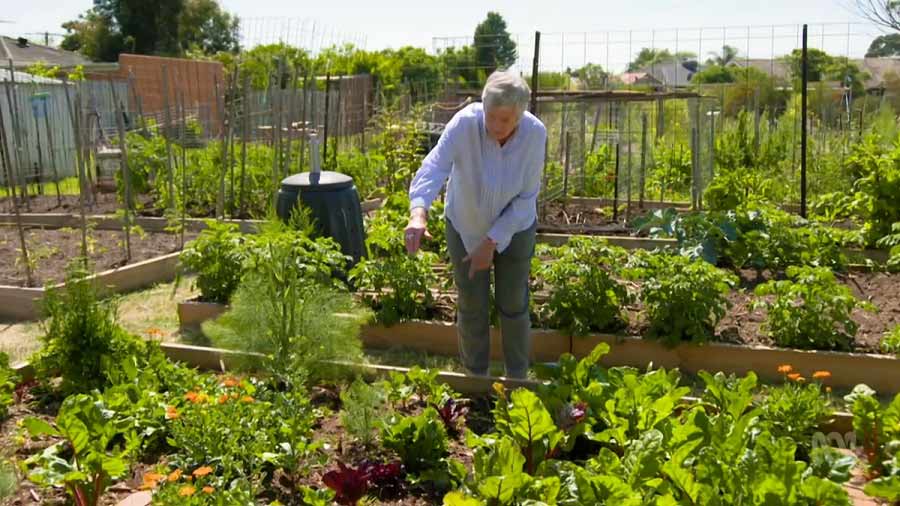
Pingback: Gardening Australia episode 36 2020 — gardening advice to inspire